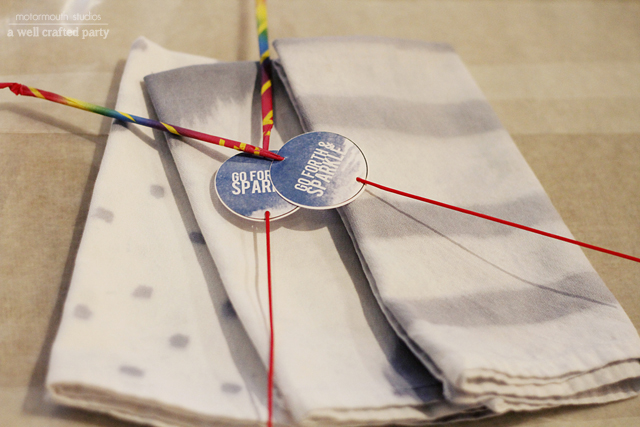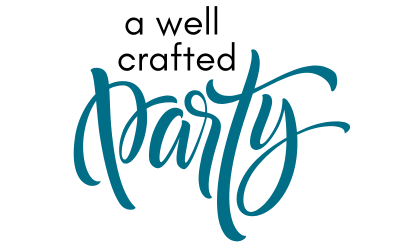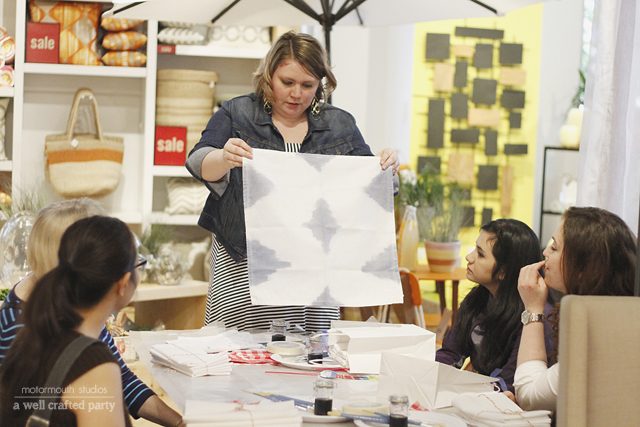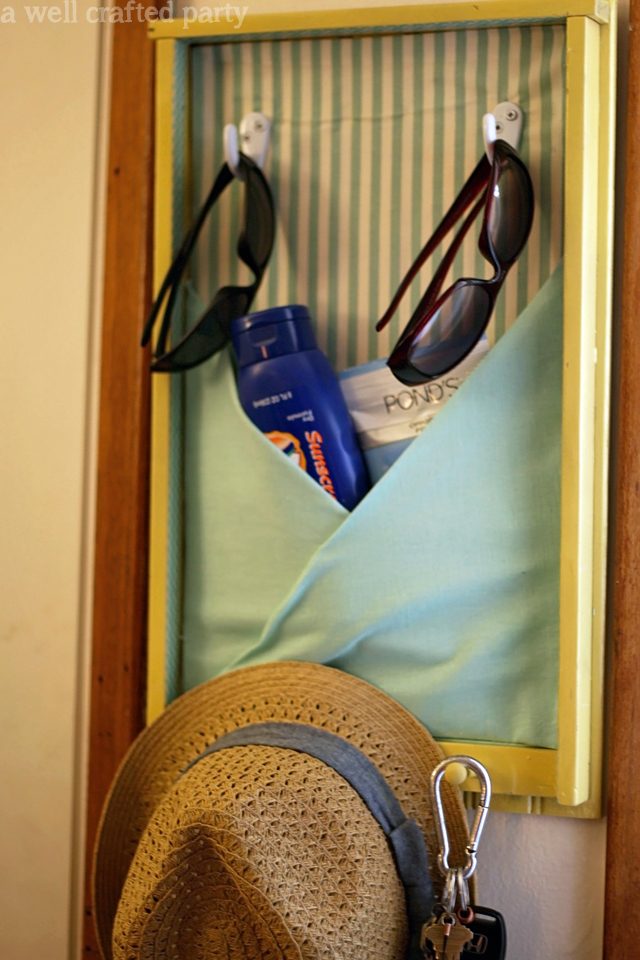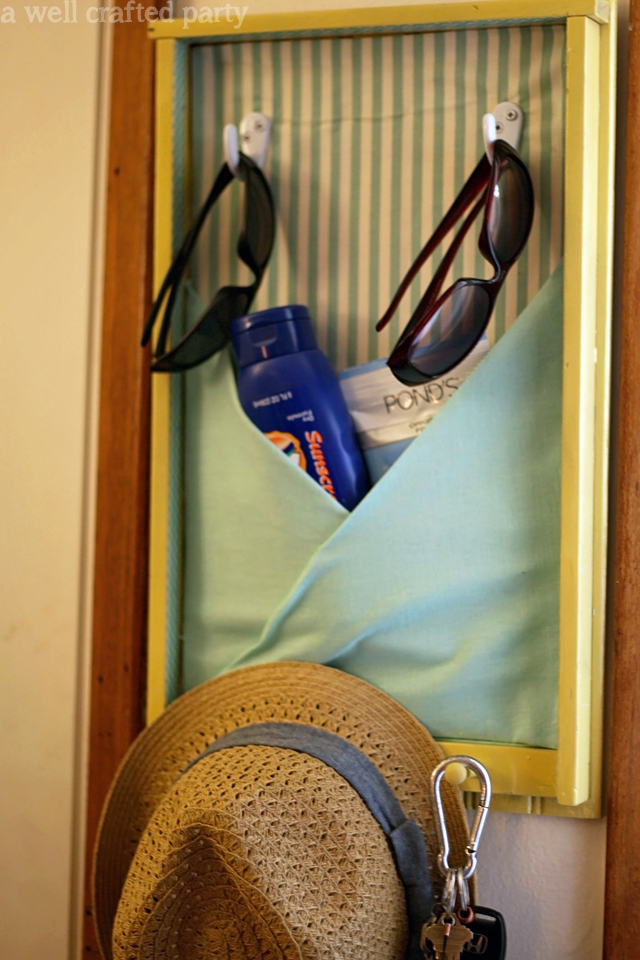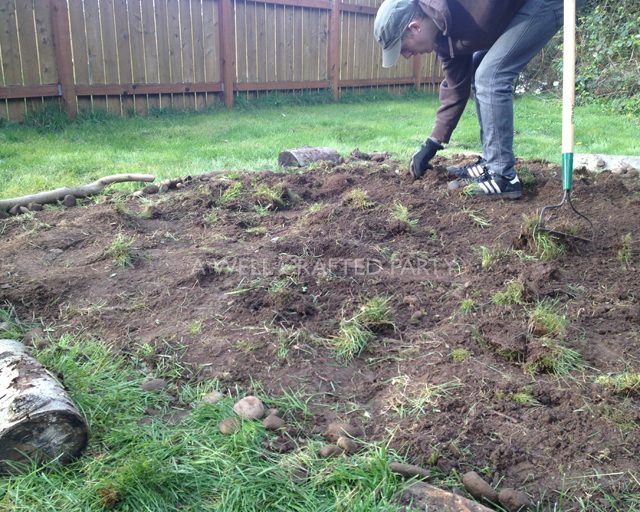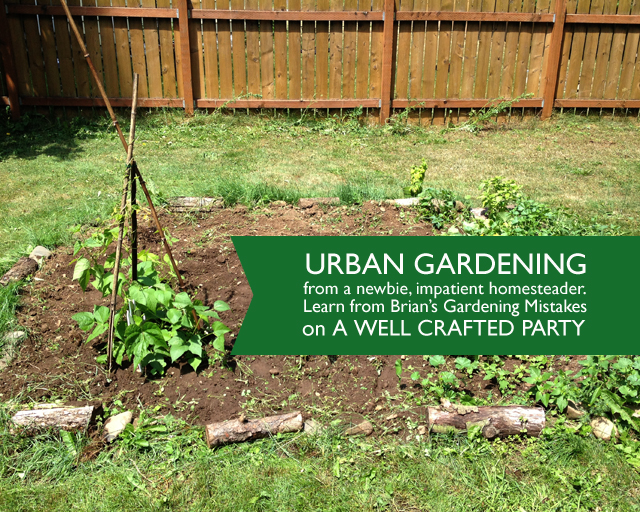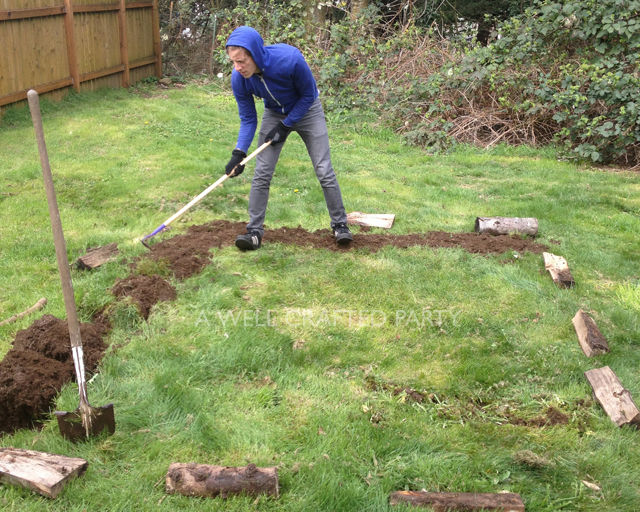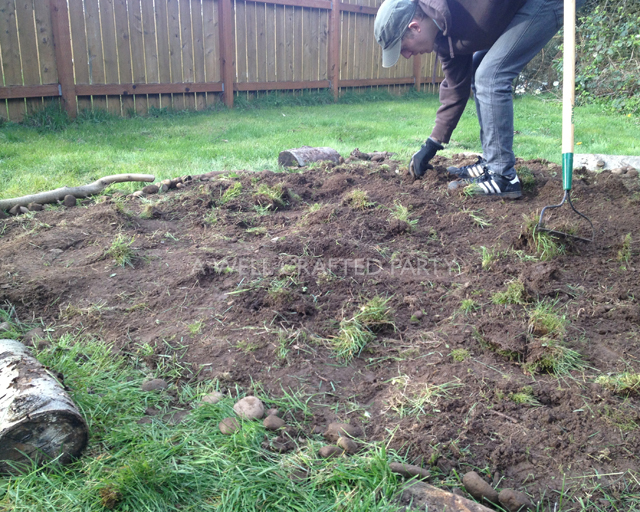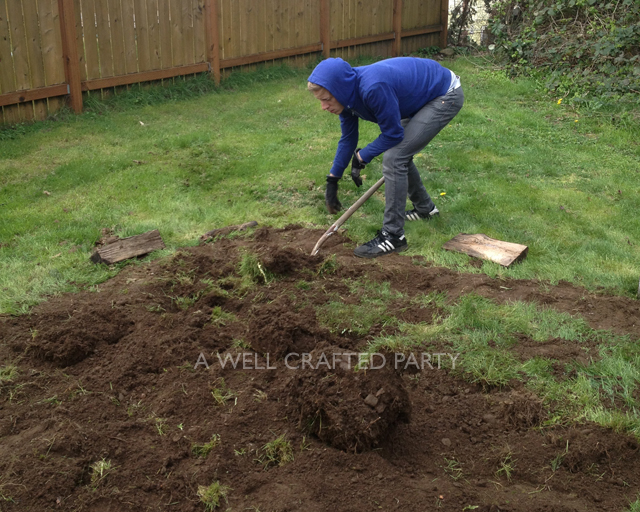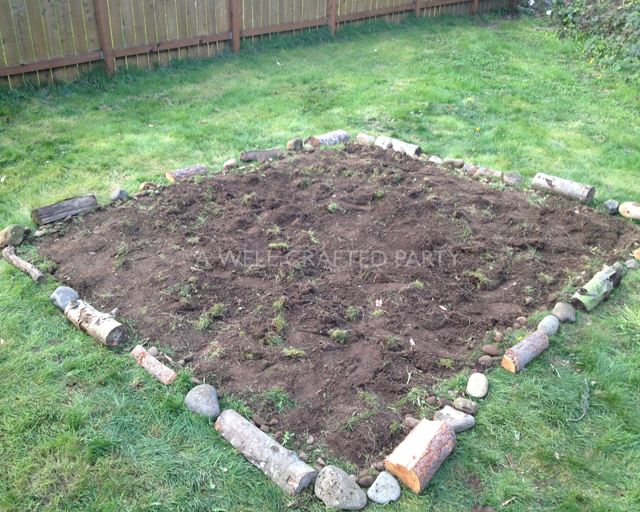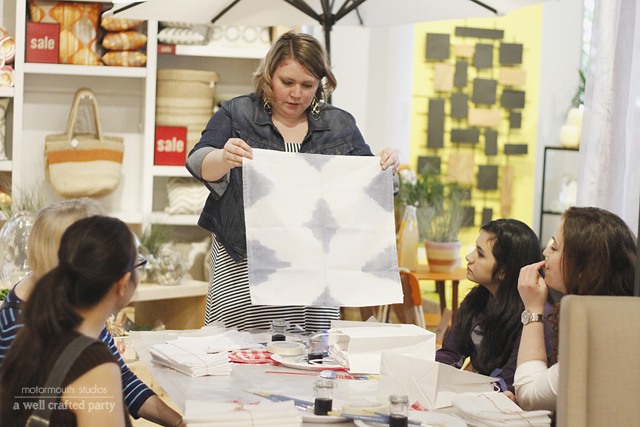
A really easy way to transform a table is by customizing the table linens to match your theme. For my Forth of July Meet & Greet event at West Elm I wanted to teach attendees a way to customize fabric napkins in a way that doesn’t end up being overtly patriotic so that they might be able to use the napkins throughout the Summer. I chose to teach a DIY Dye Painting craft that creates fabric napkins with almost a water color effect. I liked the effect so much that I chose to create matching printables with the watercolor look too complete the party. Stay tuned this week to see the free printables. (sneak peek here!)
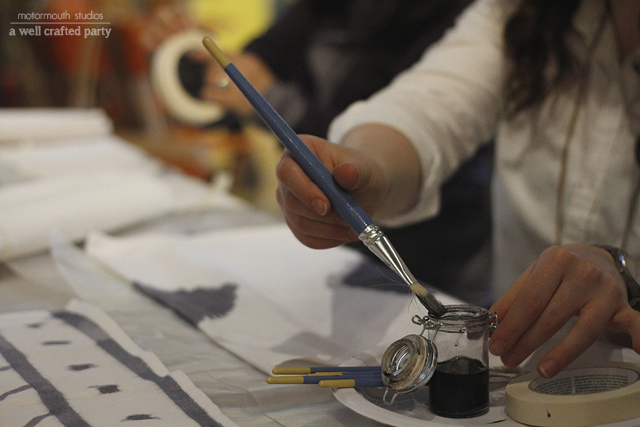
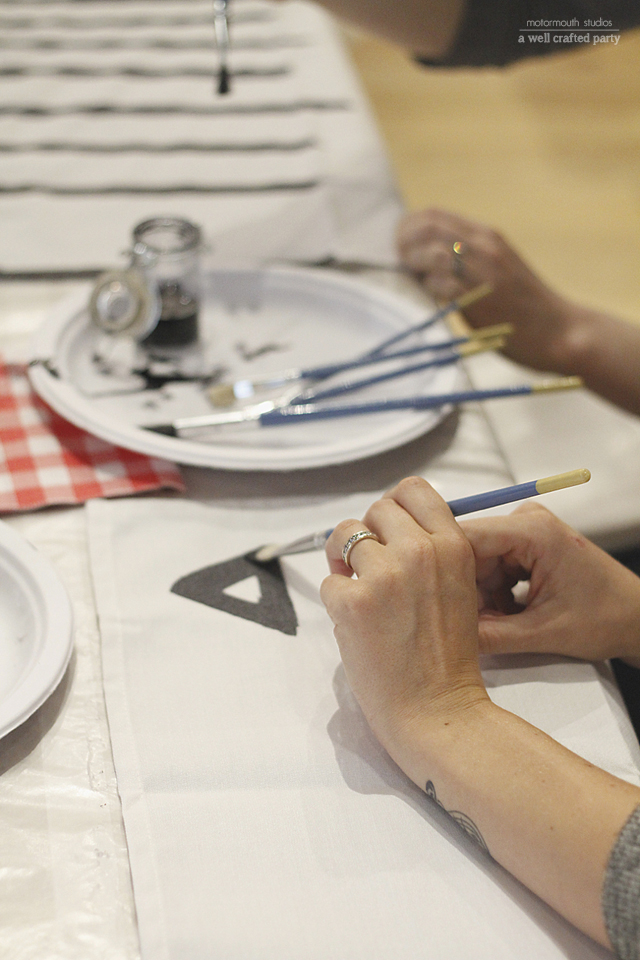
DIY Dye Painted Cloth Napkins
Supplies Needed: (Links are affiliate links. Affiliate link purchases help support this blog.)
- Wax paper
- Paint brush (medium size worked best for me… though, any size works!)
- Liquid Rit Dye (I used Navy Blue)
- Salt
- Cotton Napkins
Directions:
*Please be careful working with dye. It wil dye your furniture, clothing, etc. It is very important to protect your space and be careful when painting with this dye. If you are worried about getting it on your hands then use latex gloves to protect them!
- Make your dye: Mix 2 Tablespoons of Liquid Rit Dye with 1/4 tablespoon of salt, and 2 Tablespoons of water.
- Place several layers of wax paper down underneath your white napkin.
- Paint shapes on your white napkin using the dye. The napkin will cause some bleeding of the dye. Small, intricate designs are not suggested for this type of fabric painting.
- Let the design dry. The drying process can be as quick as 30 minutes. I let mine sit overnight. The overall print will be lighter than that painted. Some of the dye will also bleed during the rinsing process… making the watercolor effect I was speaking of before.
- Rinse each napkin separately under cool water until water runs clear. Put in dryer or hang to dry.
- Wash the napkins in a separate load and not with your regular clothing in future washings. The dye may bleed in the next few washings and you don’t want to get the dye on other cloth items.
Some painting ideas…
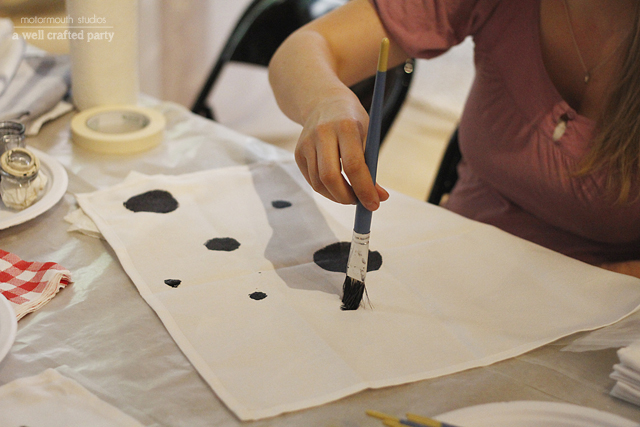
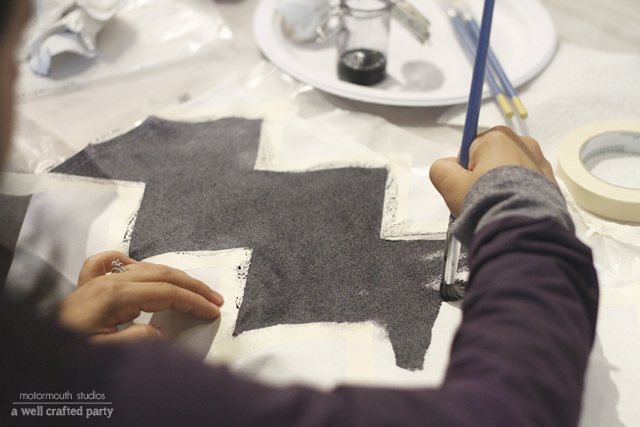
Finished Product…
